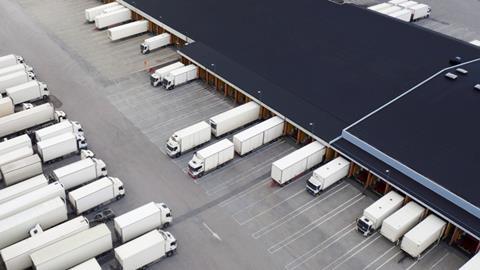The supply response to the extraordinary demand for UK logistics property is being hindered by multiple factors, according to global real estate advisor, CBRE.

The firm's latest UK Logistics research report provides an overview of the major trends impacting the market including e-commerce evolution, supply constraints, automation and robotics.
According to the research, the surge in online retail activity over the last two years has generated a substantial increase in demand for logistics facilities, with occupiers competing for the available sites and pushing rents to all-time highs.
At the end of 2021, just 17.2m ft2 of space was available, representing a drop of vacancy rate from 4.10% at the end of 2020 to 1.58%.
However, factors including land availability and considerable upward pressure on values, rising construction costs and a challenging planning process are limiting the amount of new supply that can be brought to the market.
Said Tasos Vezyridis, executive director, Research at CBRE: 'Despite yields being at low levels and therefore forecasting a more contained capital value growth, the industrials and logistics sectors is still expected to outperform all other sectors during the next five years.
'The key to the logistics sectors continued growth will be flexibility by all parties, whilst embracing trends that are expected to truly shape the market over the coming years.'
Speculative shift
The impact of the various, limiting factors on the sector has meant that construction strategies have changed, with developers becoming more risk inclined. According to the report, both the size and type of stock coming to the market has shifted to smaller and more speculative developments. In Q4 2021, speculative development accounted for 57% of space under construction compared to just 14% in Q1 2020.
However, 76.5% of the new speculative units under construction in Q4 2021 were in the smaller size band of 100-300k ft2 because plots that would have previously been reserved for a 1m ft2 build-to-suit opportunity are now being used to build multiple smaller speculative units.
This phenomenon, which would not always match the occupiers’ requirements for larger, bespoke units that can make the most of economies of scale, is linked to developers willing to capture the fast rental growth environment, prioritising it above securing long term agreements.
Role of automation
Demand for automation and the use of robotics inside logistics facilities is becoming increasingly prevalent. Warehouse automation allows occupiers to improve productivity and efficiency in the warehouse and in turn, redeploy the workforce to complete more complex, high-value tasks.
According to the report, the UK level of warehouse automation in 2021 was still relatively low, with 60% of warehouses using entry level or base automation such as conveyors, warehouse management systems and automated guided vehicles. However, many companies are working towards a hybrid approach to drive productivity and manage increased supply chain complexity.
Siad Keith Fernandez, director, Warehouse Consultancy at CBRE said: 'Increasing labour concerns and environmental pressures means investors, developers and landlords need to understand the impact of automation on occupier decisions and work with them to develop long-term sustainable solutions.'
Whilst the UK vacancy rate dropped to an all-time-low in 2021, investment volumes for UK logistics reached a record £16.5 bn (€20 bn), an increase of 78% year-on-year. Prime yields dropped to below 4% across all UK regions in 2021, which puts them close to their maximum compression.
According to the report, the impressive investment volumes are likely to continue throughout 2022, fuelled by operations including large platforms and portfolios.










